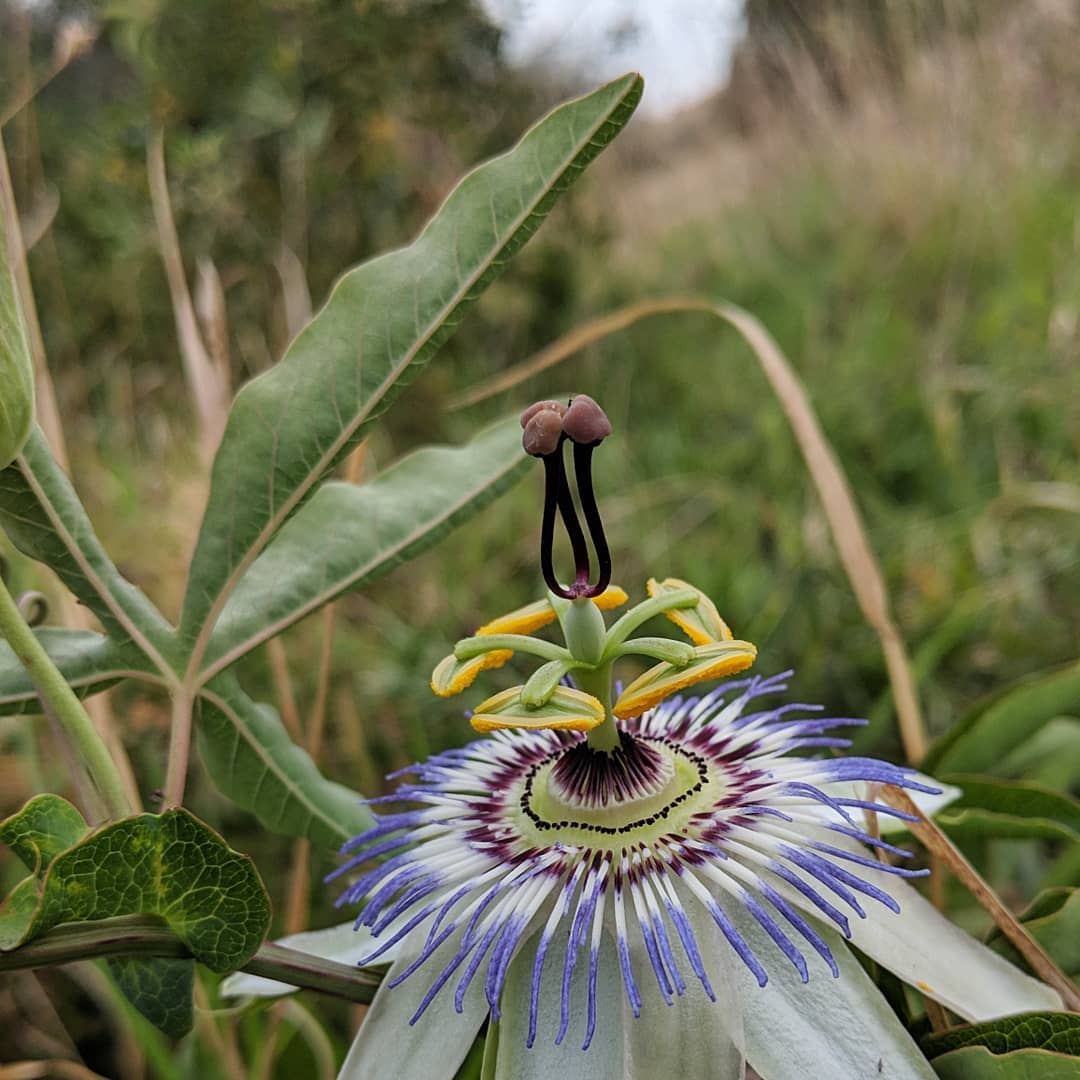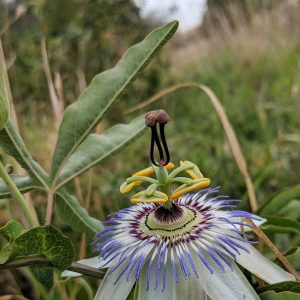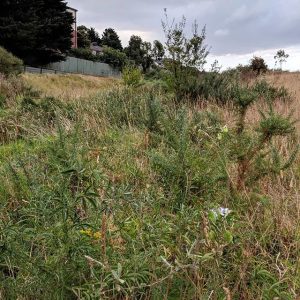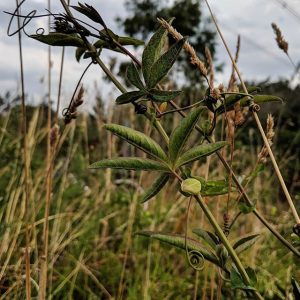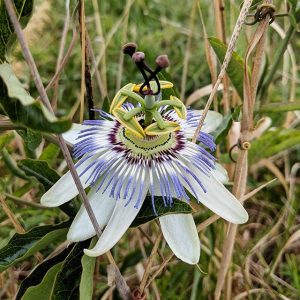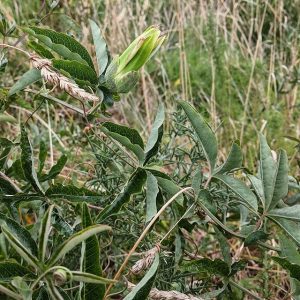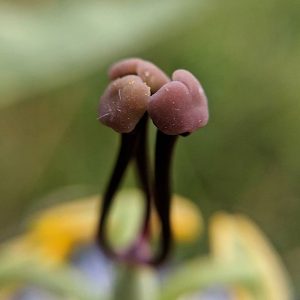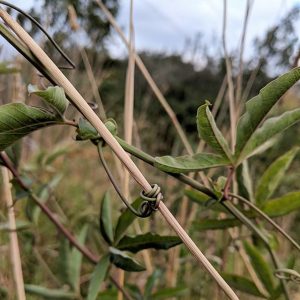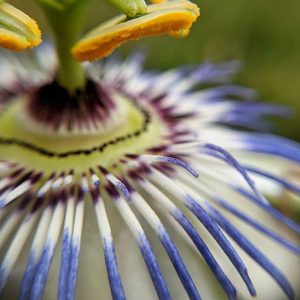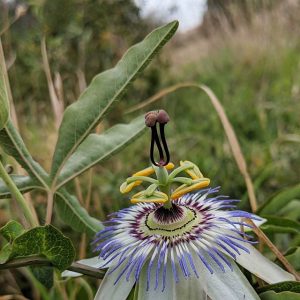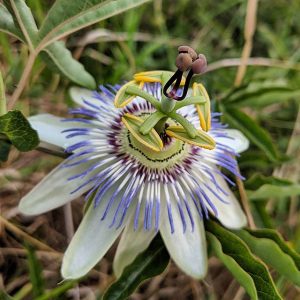Blue Passionflower (Passiflora caerulea), a Brazilian perennial vine and close relation to Passionfruit.
Producing unpalatable (though edible) fruit, Blue Passionflower is a popular grafting choice for cultivated passionfruits (Passiflora edulis), conferring cold tolerance and other benefits. Unfortunately, as rootstock the species has a tendency if left unmanaged to produce its own suckers and successfully flower and fruit, often smothering the grafted plant. With its elaborate flowers, Blue Passionflower is also sometimes planted as an ornamental vine, and was a popular early nursery distribution in Melbourne, with several cultivars available in 1850s and 1860s catalogues.
As a garden escape, Blue Passionflower has been recorded since at least the 1930s in NSW and Queensland. In Victoria, it was reported in 1944 and again in 1977 in East Gippsland, and then in 1983 in the Yarra Ranges and in 1984 near Mornington. It has been recorded infrequently in Melbourne’s northern suburbs since 1992. Due to its smothering characteristics, it is of concern as an environmental weed in our state, particularly on the Mornington Peninsula and in the east; and is a significant bushland invasive in parts of coastal NSW and New Zealand.
The photographed plants were growing amidst shrubby floodway vegetation along Yuroke Creek, a tributary to the Moonee Ponds Creek in Broadmeadows. They had likely established initially from seed spread from nearby residential gardens by birds or bats, or in flood-borne garden waste.
View Original Post on Instagram
Search for information about Passiflora caerulea in the Flora of Victoria
View information and occurrences of Passiflora caerulea on the Atlas of Living Australia
